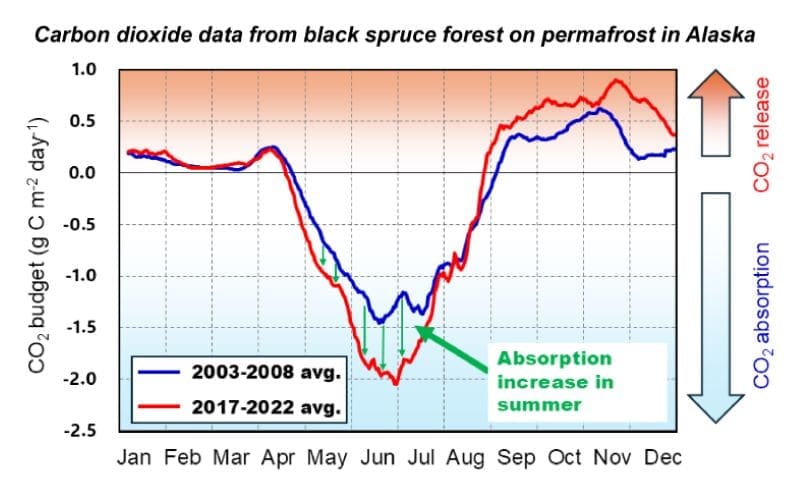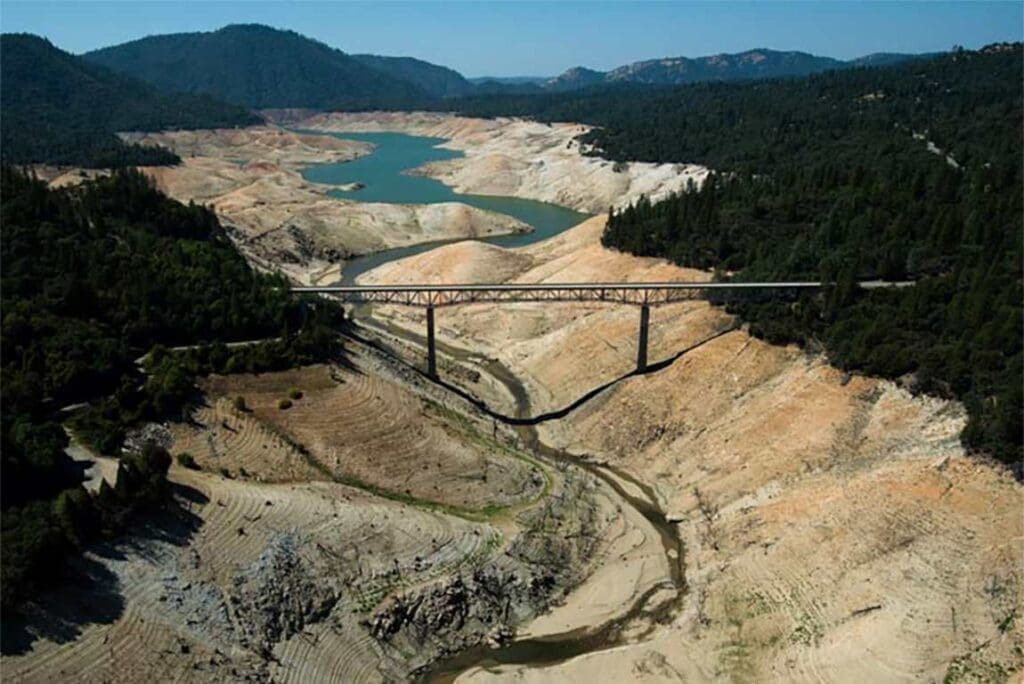A pioneering 20-year study led by researchers from Osaka Metropolitan University, published in the Proceedings of the National Academy of Sciences, has revealed new insights into carbon dynamics in permafrost forests, challenging current climate models.
Conducted between 2003 and 2022 in the Alaskan interior, this long-term observation marks one of the most extensive analyses of CO2 fluxes in northern forests growing over permafrost. Researchers found that climate change is not only increasing carbon emissions from these forests but is also unexpectedly boosting their role as CO2 sinks.

The research, led by Associate Professor Masahito Ueyama of Osaka’s Graduate School of Agriculture, tracked carbon exchange between the forest and the atmosphere. Results show a contrasting pattern over the two decades: during the first ten years, CO2 sinks – areas that absorb more CO2 than they release – had significantly diminished, often turning into net carbon sources. However, in the second decade, CO2 sink capacity notably rebounded, with an almost 20% increase in CO2 absorption rates.
Professor Ueyama attributes the surge in CO2 absorption to changes in moisture levels caused by warming. Warming led to wetness, which in turn aided the growth of black spruce trees. These trees, critical to the ecosystem, appear to be responding positively to the increased availability of moisture, which has boosted their photosynthesis and carbon uptake. This moisture also aids in recycling the rising levels of atmospheric CO2 produced by human activities.
The findings challenge prior assumptions in climate models, where permafrost regions were largely viewed as carbon sources due to the anticipated release of long-stored organic carbon from thawing soil. The observed increase in CO2 absorption by vegetation could impact predictions of climate progression.
“The 20 years of observational data that we have is, as far as we know, the longest record of such research on permafrost forests in the world,” said Ueyama. Yet, he warned against over-generalizing the findings, noting: “Since it is difficult to apply the findings and data from those 20 years to a future world in which warming continues, further long-term observations are needed.”
This study may provide an essential framework for recalibrating climate models that predict carbon cycles in permafrost zones. Professor Ueyama and his team hope that these findings will prompt a re-evaluation of carbon sinks in climate models, ultimately improving the accuracy of climate forecasts in northern forest regions.
Journal Reference:
Masahito Ueyama, Hiroki Iwata, Hirohiko Nagano, Naoki Kukuu, Yoshinobu Harazono, ‘Anomalous wet summers and rising atmospheric CO2 concentrations increase the CO2 sink in a poorly drained forest on permafrost’, Proceedings of the National Academy of Sciences 121 (44) e2414539121 (2024). DOI: 10.1073/pnas.2414539121
Article Source:
Press Release/Material by Osaka Metropolitan University
Featured image: The tower installed in a black spruce forest on permafrost in Fairbanks, Alaska, monitors CO2 exchange and environmental conditions in 30-minute intervals. Credit: Osaka Metropolitan University




